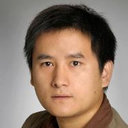Paroxysmal non-epileptic events in infants and toddlers: A phenomenologic analysis.
Açar sözlər
Mücərrəd
OBJECTIVE
The aim of this study was to analyze in detail the clinical phenomenology of paroxysmal non-epileptic events (PNEE) in infants and toddlers.
METHODS
We studied all children aged ≤2 years who were diagnosed with PNEE based on video-electroencephalographic (VEEG) recordings. We analyzed the following four clinical domains of each clinical event: (i) motor manifestations (body/limb jerking, complex motor, and asymmetric limb posturing); (ii) oral/vocal (crying, vocalization, sighing); (iii) behavioral change (arrest of activity, staring); (iv) and autonomic (facial flushing, breath holding).
RESULTS
Thirty-one of 81 (38.3%) infants and toddlers had 38 PNEE recorded during the study period (12 girls and 19 boys, mean age 10.5 months). The predominant clinical features were as follows: motor in 26/38 events, oral/verbal in 14/38 events, behavioral in 11/38 events, and autonomic in 8/38 events. Epileptic seizures and PNEE coexisted in four children (12.9%). Seventeen children (54.8%) had one or more risk factors suggestive of epilepsy. Twelve children (38.7%) had a normal neurologic examination, 10 (32.3%) had developmental delay, and eight (25.8%) had a family history of epilepsy or seizures.
CONCLUSIONS
VEEG recorded PNEE in nearly 40% of 81 infants and toddlers referred for unclear paroxysmal events in our cohort. Non-epileptic staring spells and benign sleep myoclonus were the most common events recorded, followed by shuddering attacks and infantile masturbation. In addition, greater than one-half of the infants and toddlers had risk factors, raising a concern for epilepsy in the family and prompting the VEEG evaluation, suggesting that paroxysmal non-epileptic seizures may frequently coexist in young children with epilepsy.


